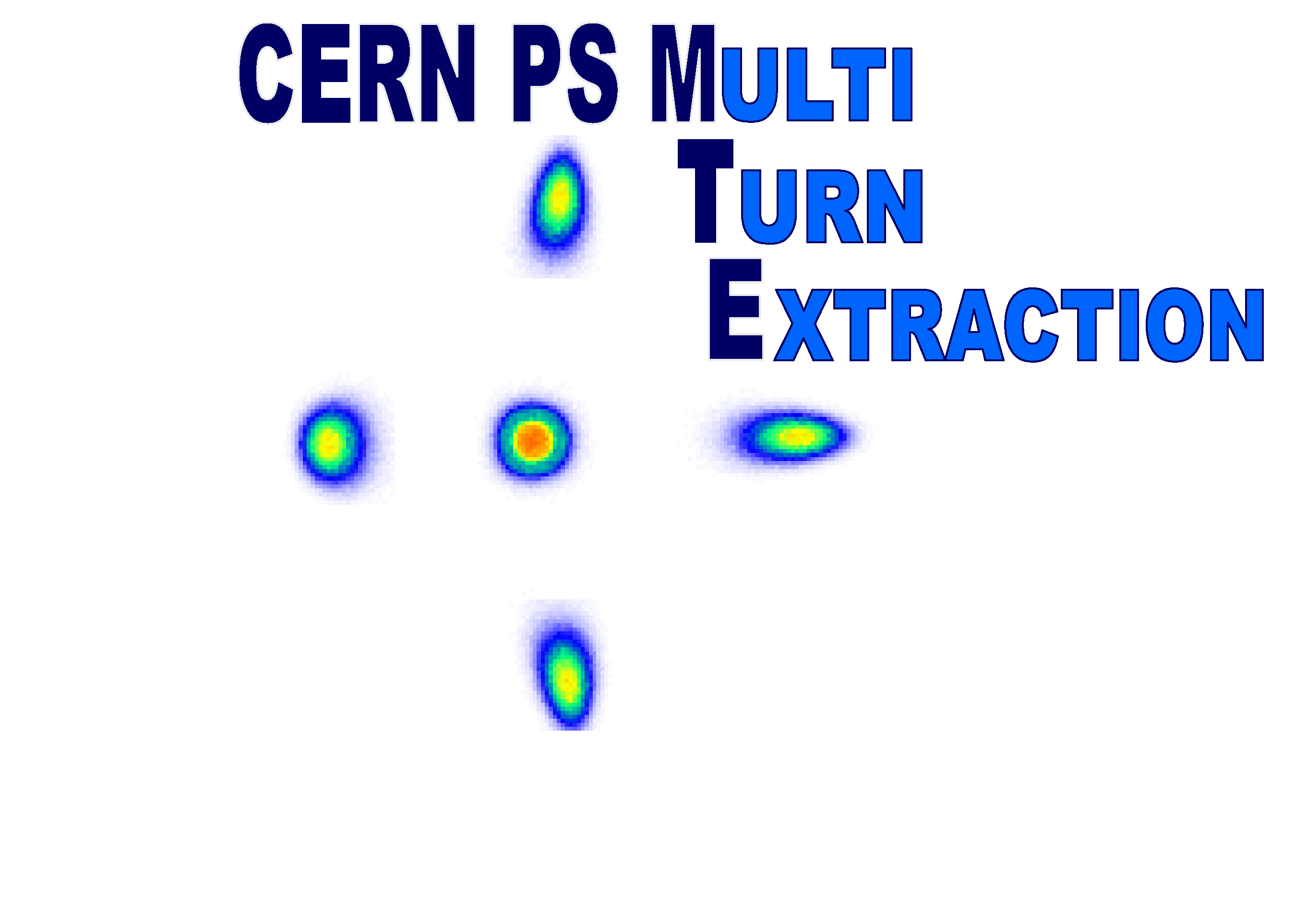
Multi-Turn Extraction
|
index ||
why mte |
who are we |
documents |
links |
minutes |
actions |
contacts | |
Why MTE?
In the framework of the activities to prepare the future high-intensity proton beam for the CERN Neutrino to Gran Sasso (CNGS) Project, a critical review of the key processes used to generate such a beam was carried out, in view of a possible upgrade beyond the present nominal intensity value of about 3.3×1013 protons per PS batch. Among other issues, efforts were devoted to the improvement of the present extraction scheme from the PS to the SPS, the so-called Continuous Transfer (CT). Such an extraction mode was developed in the mid 1970s with the aim of delivering a beam at 14 GeV/c to the Super Proton Synchrotron (SPS), five Proton Synchrotron (PS) turns long, and with a reduced horizontal beam emittance to overcome the SPS aperture limitation in the vertical plane: a special optics in the transfer line joining the PS and SPS allows the two transverse planes to be exchanged (in particular the emittance values). This approach consists in slicing the beam by means of an electrostatic septum: with the horizontal tune set to 6.25 this method allows the generation of one continuous ribbon four turns long plus an additional slice, representing the beam core, for a total beam length of five PS turns. Although this extraction mode is certainly adapted to the present performance, in the event of an intensity increase, a number of potential weak points appear, such as the intrinsic beam losses related to the underlying principle of this extraction mode, and also the properties of phase space matching of the different slices.
In the framework of the High Intensity Protons Working Group (HIP-WG) a detailed analysis of the losses for the beam for CNGS was performed. The outcome is rather striking: for an overall intensity of about 4.5×1019 protons/year required by the neutrino experiments, approximately 1.7×1019 are lost in the accelerator chain, corresponding to about 40% of the total intensity. A large fraction of beam losses, namely 0.7×1019, or 40% of the total intensity lost occurs in the electrostatic septum of the PS ring used to slice the beam.
In the quest for an improved extraction mode, a novel approach was proposed. In the new scenario the beam will be separated in transverse phase space by generating stable islands inside the region where the beam sits and by slowly (adiabatically) moving them towards higher amplitudes. By doing this, particles may get trapped inside islands thus generating well-separated beamlets. This method is potentially superior to the present one as no intercepting device is used to split the beam; hence particle losses are limited to the fraction of the beam improperly deflected during the kicker rise time. Furthermore, the extracted beam should better match the phase space structure.